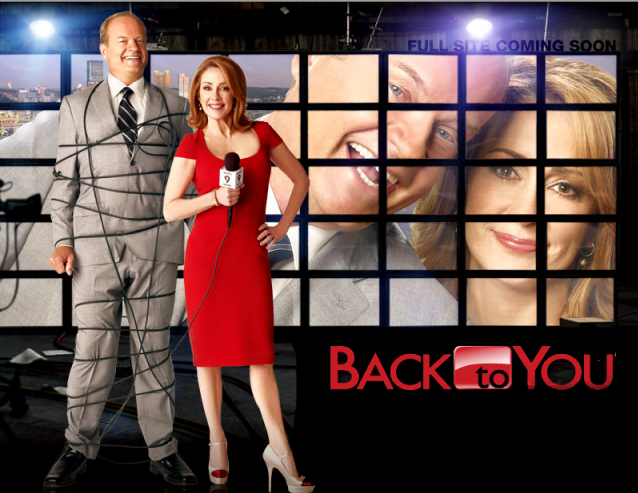Who’s The Boss
Widower Anthony Morton “Tony” Micelli (Danza) is a former second baseman for the St. Louis Cardinals who was forced to retire due to a shoulder injury and the up and coming career of Tommy Herr. He wanted to move out of Brooklyn to find a better environment for his daughter, Samantha (Alyssa Milano). He ended up taking a job in upscale Fairfield, Connecticut as a live-in housekeeper for divorced advertising executive Angela Bower (Judith Light). The Micellis moved into the Bower residence. Also starring were Danny Pintauro as Angela’s son Jonathan and Katherine Helmond as Mona Robinson, her feisty, man-hungry mother.
The title of the show referred to the clear role reversal of the two lead actors, where a woman was the breadwinner, while a man stayed at home and took care of the house, thus the question of who the “boss” really was. It challenged media stereotypes of Italian-Americans as wholly ignorant of life outside of urban working-class neighborhoods.
THEME:
The show’s theme song, “Brand New Life” had four full versions of this song, as well as two short versions used during the course of the series’ run. The first version, used in the first two seasons, was performed by Tony Danza himself. The second version, which was used from 1986-1990, was performed by country music singer Steve Wariner. The third version was used for the final two seasons (shown here).
The original version featured the opening verse, “There’s more to life than what you’re livin'”, which was changed to “There’s a time for love and a time for livin'” in the show’s third season. Below is the season three version with the lyric change, compared to the original above:
The season three version also had the opening instrumental elongated and a slightly mellower music. A modified version was used during the show’s seventh season and modified again for season eight. Various instrumental versions of this theme were used as a closing theme during the series.
The pilot episode’s opening sequence featured the van (which supposedly belongs to Tony) driving from New York to the Bowers’ house in Connecticut, with the cast and executive producer’s names credited over it (the footage of the van driving to Connecticut was truncated to the very beginning of the opening for the beginning with episode two, limited to the first five seconds for the first two seasons and extended to the first twelve seconds afterwards with the remainder replaced with episode clips). During the first season, Alyssa Milano and Danny Pintauro were credited together (they were credited separately from season two onward).
The original airing of the pilot episode featured a slightly different intro, compared to what was used in later airings.
Crocodile mile
I saw this commercial on tv frequently and had to have it. I used mine often and soon learned – What do you do when you see a crocodile?
“You run, you slide, you hit the bump, and take a dive!”
Disneys Adventures In Music (1953)
Toot, Whistle, Plunk And Boom
Professor Owl takes class through a basic history of music, from cavemen times to present day, explaining the four archetypes and how they work together to create pleasant sounds. This Academy Award winner is presented unedited and in its original Cinemascope aspect ratio.
Melody (also from 1953)
This Classic Short Shows The New Experimental Animation Of “The Nine Old Men”.This Was Also The Studio’s First Foray Into The Field Of 3-D Animation.
Pleasantville Trailer
Though one of the most notable aspects of Pleasantville is its extreme contrast – particularly its rich contrast between color and black and white – the symbolism in the film should be noted as well. The most obvious symbolism exists in the “colored” versus those who are still black and white. As a reference to the racism in the 1950s and 1960s in United States, there is a sign posted in a shop window at one point declaring “No colored Allowed”, which referred to store owners refusing service to Black Americans during the aforementioned era.
Towards the end of the film, the courtroom scene is a throwback to the To Kill a Mockingbird movie, where Atticus Finch makes his famous closing argument. As in To Kill a Mockingbird, the courtroom is divided by color. Sitting in the second floor balcony seats are the “colored”, where Black Americans sat in To Kill a Mockingbird, and the black and white people (White Americans) are sitting on the floor seats of the courtroom. Bud, like Atticus Finch, also makes an impassioned speech to the judge and jury about the unfairness of the trial at hand; however, Bud is not the lawyer but instead one of the accused.
In addition, there is a scene involving Bud and Margaret where she grabs an apple and eats it. It strongly parallels the story of Adam and Eve, symbolizing the “Fall of Man,” or in this case, the moment where Bud stops trying to live Pleasantville as a television show and really starts being his own version of Bud.[original research?] The moment is repeated a few scenes later, to further enforce this symbolism, when the TV Repairman envys Margret for that bite.
Gary Ross was quoted about the symbolism of the film, saying, “This movie is about the fact that personal repression gives rise to larger political oppression…That when we’re afraid of certain things in ourselves or we’re afraid of change, we project those fears on to other things, and a lot of very ugly social situations can develop”. [1]
Another symbolic aspect to consider is the assumed connection between colors and loss of innocence. For example, most of the time when a black and white person had sex or experienced a moment of pleasure, they obtained color. This idea is somewhat of a paradox and does hold true for certain characters in the movie. Jennifer has sex profusely but only gains color when she eschews sex in favor of reading her first book. Bud gains color only after he defends Betty from a band of thugs and experiences true anger and defense.
I knew “Back to You” would be cancelled
Because I had a 3rd degree inlet to the casting director for it with a possibility to get some screen time in an episode or two or ten. It was at that point that I knew the Fox comedy starring Kelsey Grammer and Patricia Heaten was doomed to go off the air within weeks.

And oh look, I was correct. Surprising, since that only happens 98% of the time, so naturally every time I’m right its a total shock.
Yes, A week before my meeting, Fox announced it would not renew the contract for the series. You might think its delusionally self centered to think that even the possibility of me working on a television show would trigger a bad luck boomerang that would sabotage the entire series, but thats only cuz you’re new to the site. Stay awhile and you’ll come around.
I apologize to all those involved and take full responsibility for the jinxing.
Now it just looks likes it will be back…to me.
*tastefully dramatic music plays as foreground lights go out, leaving my silhouette while some credits roll or something*
Aladdin – There’s a Party Here in Agrabah
A direct to video sequel in the fashion that The Return of Jafar should have been done in: with not-complete-garbage animation quality, faster paced gags and sequences and Robin Williams as the Genie.
